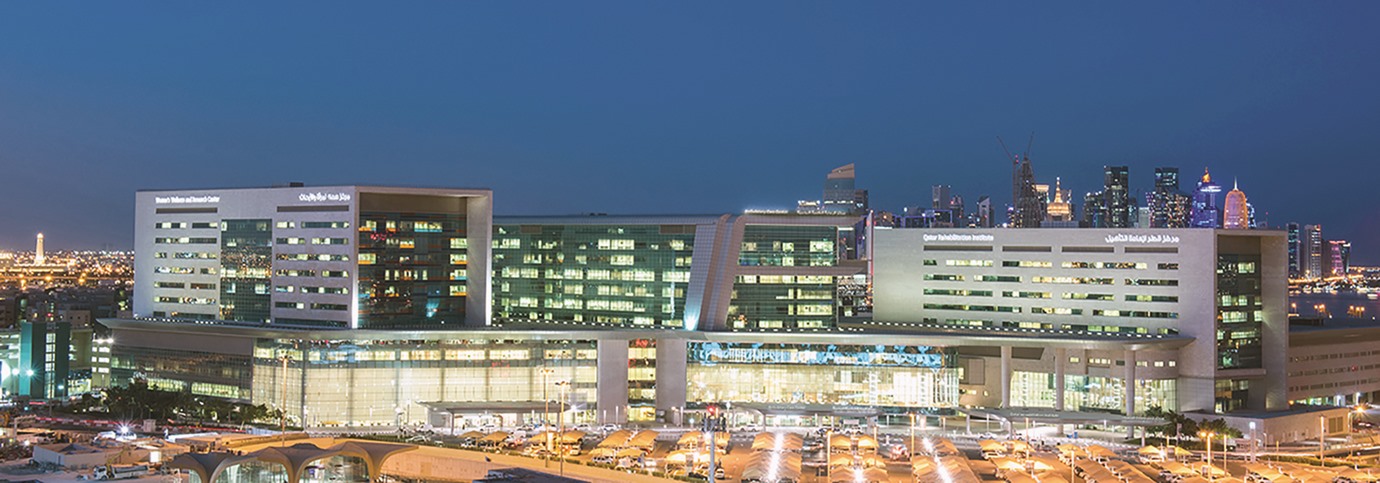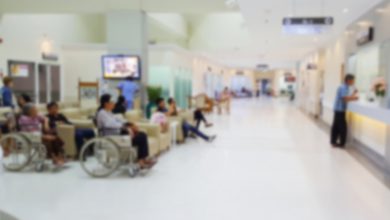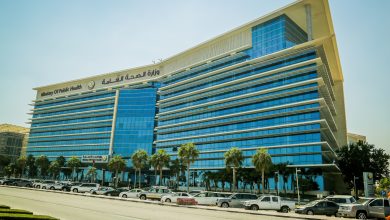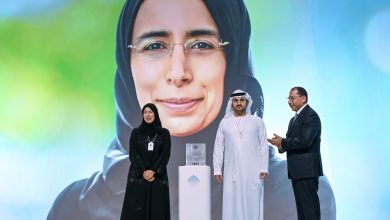HMC Stroke Service Exceeds International Benchmark in Patient Care
حمد الطبية تتجاوز المعايير الدولية بعلاجها 69 بالمئة من مرضى السكتة الدماغية
QNA
Doha: Stroke Service of Hamad Medical Corporation (HMC) exceeds international benchmarks for quality of care by ensuring that 69 percent of acute stroke patients are treated within 60 minutes of arrival to the emergency exceeding the international benchmark of 50 percent.
The speed at which treatment can be given to stroke patients is vital to a successful outcome, said Director of Neuroscience Institute at HMC Dr. Ahmed Mohammed Abdulla Own. “A stroke leads to the complete or partial restriction of blood flow in the brain and damages brain cells so they can no longer work properly. The faster treatment can be given following a stroke, the better the chances of recovery. The more time that passes between the stroke happening and medical intervention, the greater the damage that can be done.
“The multi-disciplinary nature of HMC’s Stroke Service has contributed greatly to ensuring stroke patients in Qatar receive the safest, most effective and compassionate care. The extensive team involved in the treatment of each stroke patient is central to the multi-disciplinary care patients receive. Stroke Neurologists and Physicians, Emergency Medical Services, ED team, Radiology, Stroke Ward, Stroke trained Nurses, Allied Health professionals, Rehabilitation team, Stroke Clinical Nurse Specialists and Interns, all provide their expertise in shaping patient treatment plans according to each patient’s individual needs,” explained Dr. Own.
“On World Stroke Day, 29 October, we raise awareness of stroke, talk about its prevention and treatment, and ensure better care and support for survivors because stroke is still the second leading cause of death worldwide, and the third leading cause of disability,” stated Dr. Own.
He states that during last year, around 2500 suspected stroke patients were treated in the Emergency Department of HMC, and one in four people will have a stroke in their lifetime. 90 percent of those strokes could be prevented by addressing a small number of risk factors including high blood pressure (hypertension), irregular heartbeat (atrial fibrillation), smoking, diet and exercise.
“This year, we are supporting the global stroke community to raise awareness and drive action on stroke prevention by focusing attention on stroke and chronic conditions or habits that can predispose someone to having a stroke,” he stressed.
Head of Stroke Services at Hamad General Hospital (HGH) and Senior Consultant Neurologist Dr Naveed Akhtar highlighted that the chronic conditions and habits that are risk factors for stroke include high blood pressure, diabetes, high cholesterol, bad diets, sedentary lifestyle and smoking. “High blood pressure affects about half of people in the world and often has no noticeable symptoms. More than half of all strokes are associated with hypertension or high blood pressure. A simple blood pressure check can determine whether you have high blood pressure, and a health professional can advise on whether your condition can be managed with lifestyle changes and/or the right medication,” he explained.
“Diabetes, Type 1, Type 2 or gestational diabetes contribute to hardening of the arteries (atherosclerosis), which increases the risk of blood clot or a ruptured blood vessel. People with diabetes are also likely to experience a number of additional stroke risk factors including obesity, poor diet, inactivity, and high cholesterol,” Dr. Akhtar explained.
He noted that smoking tobacco also increases the risk of having a stroke. “Someone who smokes 20 cigarettes a day is six times more likely to have a stroke compared to a non-smoker. If you are a smoker, quitting will reduce your risk of stroke and a range of other diseases. If you live with a non-smoker, quitting will reduce their stroke risk too,” he warned.
Head of Neurology Department at HGH highlighted six key facts about stroke treatment which include early recognition of stroke, getting treatment quickly, using clot-busting drugs (tPA or thrombolysis) or getting clot retrieval treatment, rehabilitation and preventing stroke reoccurrence by taking drugs to lower blood pressure and cholesterol, antiplatelet therapies, anticoagulation for atrial fibrillation, surgery or stenting for selected patients with severe carotid artery narrowing.
“Around the world, around 80 million people have experienced a stroke. Stroke can affect how you think, talk, move and feel. Many survivors will live the rest of their lives with some form of disability or impairment which cause practical, emotional and financial challenges. But with specialist rehabilitation and support, stroke survivors can however recover or find their ‘new normal’ and enjoy life. In addition, lifestyle changes can also greatly reduce the risk of another stroke. Changes include eating well, being physically active, being tobacco-free, managing stress, and limiting alcohol consumption,” Dr. Elalamy added.
قنا
الدوحة: كشفت مؤسسة حمد الطبية عن علاجها بنجاح 69 بالمئة من مرضى السكتة الدماغية الحادة في غضون 60 دقيقة من وصولهم إلى قسم الطوارئ، وهو ما يتجاوز المعيار الدولي لجودة الرعاية الصحية، الذي يحقق علاج 50 بالمئة من المرضى خلال ذات المدة.
وفي هذا الإطار، قال الدكتور أحمد محمد عبدالله عون رئيس معهد العلوم العصبية بمؤسسة حمد الطبية: “إن السرعة التي يتم خلالها تقديم العلاج لمرضى السكتة الدماغية تعد أمرا حيويا ومهما لتحقيق نتيجة ناجحة، حيث تؤدي السكتة الدماغية إلى تقييد تدفق الدم بشكل كامل أو جزئي في الدماغ، مما يتسبب في إتلاف خلايا الدماغ وعدم عملها بصورة صحيحة”، موضحا أن تقديم العلاج بشكل أسرع بعد السكتة الدماغية يزيد من فرص الشفاء، فيما يسهم تأخر التدخل الطبي بعد الإصابة بالسكتة الدماغية بزيادة الضرر الذي يمكن حدوثه.
وأكد أن تعدد تخصصات خدمات السكتة الدماغية بحمد الطبية أسهمت بشكل كبير في ضمان حصول المرضى بدولة قطر على رعاية صحية آمنة وفعالة، حيث يمثل الفريق الشامل المشارك في علاج كل مريض بالسكتة الدماغية الأساس في تقديم الرعاية متعددة التخصصات التي يتلقاها المرضى، إذ تقدم الكوادر الطبية والتمريضية والمتخصصون في المجالات الصحية المساندة وخدمات الطوارئ وإعادة التأهيل والمتدربين، خبراتهم في تصميم خطط العلاج للمرضى وفقا للاحتياجات الفردية لكل مريض.
وأشار رئيس معهد العلوم العصبية بمؤسسة حمد الطبية، إلى أن اليوم العالمي للسكتة الدماغية، الذي يصادف 29 أكتوبر من كل عام، يعد فرصة نقوم من خلالها برفع مستوى الوعي بالسكتة الدماغية، والتعريف بطرق الوقاية منها والعلاجات المتوفرة، وضمان تقديم رعاية ودعم أفضل للناجين منها، مبينا أن السكتة الدماغية لا تزال المسبب الرئيسي الثاني للوفاة في جميع أنحاء العالم، والسبب الرئيسي الثالث للإصابة بالعجز.
وأوضح أنه تم علاج حوالي 2500 مريض يشتبه في إصابتهم بالسكتة الدماغية في قسم الطوارئ بمؤسسة حمد الطبية، حيث إن واحدا من بين كل أربعة أشخاص سيصاب بالسكتة الدماغية في مرحلة من حياته، ويمكن الوقاية من 90 بالمئة من هذه السكتات الدماغية، عن طريق إدارة عدد صغير من عوامل الخطر، والتي تتضمن؛ ارتفاع ضغط الدم، وعدم انتظام ضربات القلب (الرجفان الأذيني)، والتدخين، وسوء التغذية، وعدم ممارسة التمارين الرياضة، قائلا: “نحن ندعم هذا العام مجتمع السكتة الدماغية العالمي من خلال تركيز الاهتمام على السكتة الدماغية والحالات أو العادات المزمنة التي يمكن أن تعرض الشخص لخطر الإصابة فيها”.
من جانبه، استعرض الدكتور نافيد أخطر رئيس خدمات السكتة الدماغية في مستشفى حمد العام، واستشاري أول طب الأعصاب، أبرز الحالات والعادات المزمنة التي تشكل عوامل خطر للإصابة بالسكتة الدماغية، والتي تشمل ارتفاع ضغط الدم، والسكري، وارتفاع نسبة الكوليسترول، وسوء التغذية، ونمط الحياة الخامل والتدخين، مشيرا إلى أن ارتفاع ضغط الدم يؤثر على حوالي نصف عدد الأشخاص في العالم، وغالبا لا يكون له أي أعراض ملحوظة، كما ترتبط أكثر من نصف السكتات الدماغية بارتفاع ضغط الدم.
وأوضح أن مرض السكري من النوع الأول أو الثاني أو سكري الحمل يسهم في تصلب الشرايين، مما يزيد من خطر تجلط الدم أو حدوث تمزق في الأوعية الدموية، مبينا أنه من المرجح تعرض الأشخاص المصابين بالسكري لعدد من عوامل خطر الإصابة بالسكتة الدماغية، والمتمثلة في السمنة، وسوء التغذية، والخمول، وارتفاع نسبة الكوليسترول، فيما يزيد التدخين من خطر الإصابة بالسكتة الدماغية، حيث إن الشخص الذي يدخن 20 سيجارة في اليوم أكثر عرضة للإصابة بالسكتة الدماغية بست مرات مقارنة بالشخص غير المدخن.
إلى ذلك، سلط الدكتور أسامة العلمي رئيس قسم الدماغ والأعصاب بمستشفى حمد العام، الضوء على ست حقائق رئيسية حول علاج السكتة الدماغية، والمتمثلة في التشخيص المبكر للسكتة الدماغية، والحصول على العلاج بسرعة، واستخدام أدوية إذابة الجلطات، أو إجراء عملية سحب الجلطة باستخدام القسطرة، وإعادة التأهيل، ومنع تكرار حدوث السكتة الدماغية، من خلال تناول أدوية خفض ضغط الدم والكوليسترول، والعلاجات المضادة للصفيحات، ومنع تخثر الدم في حالة الرجفان الأذيني، والجراحة أو الدعامات للمرضى الذين يعانون من ضيق شديد في الشريان السباتي.
وأشار إلى أن حوالي 80 مليون شخص حول العالم قد أصيب بالسكتة الدماغية، مبينا أنه يمكن للسكتة الدماغية أن تؤثر على طريقة تفكير الشخص وكلامه وحركته وشعوره، كما يعيش العديد من الناجين بقية حياتهم مع شكل من أشكال العجز أو الضعف الذي يسبب تحديات عملية وعاطفية ومالية، فيما يمكن للناجين من خلال الحصول على خدمات إعادة التأهيل والدعم المتخصص التعافي أو العثور على “طبيعتهم الجديدة” والاستمتاع بالحياة.




